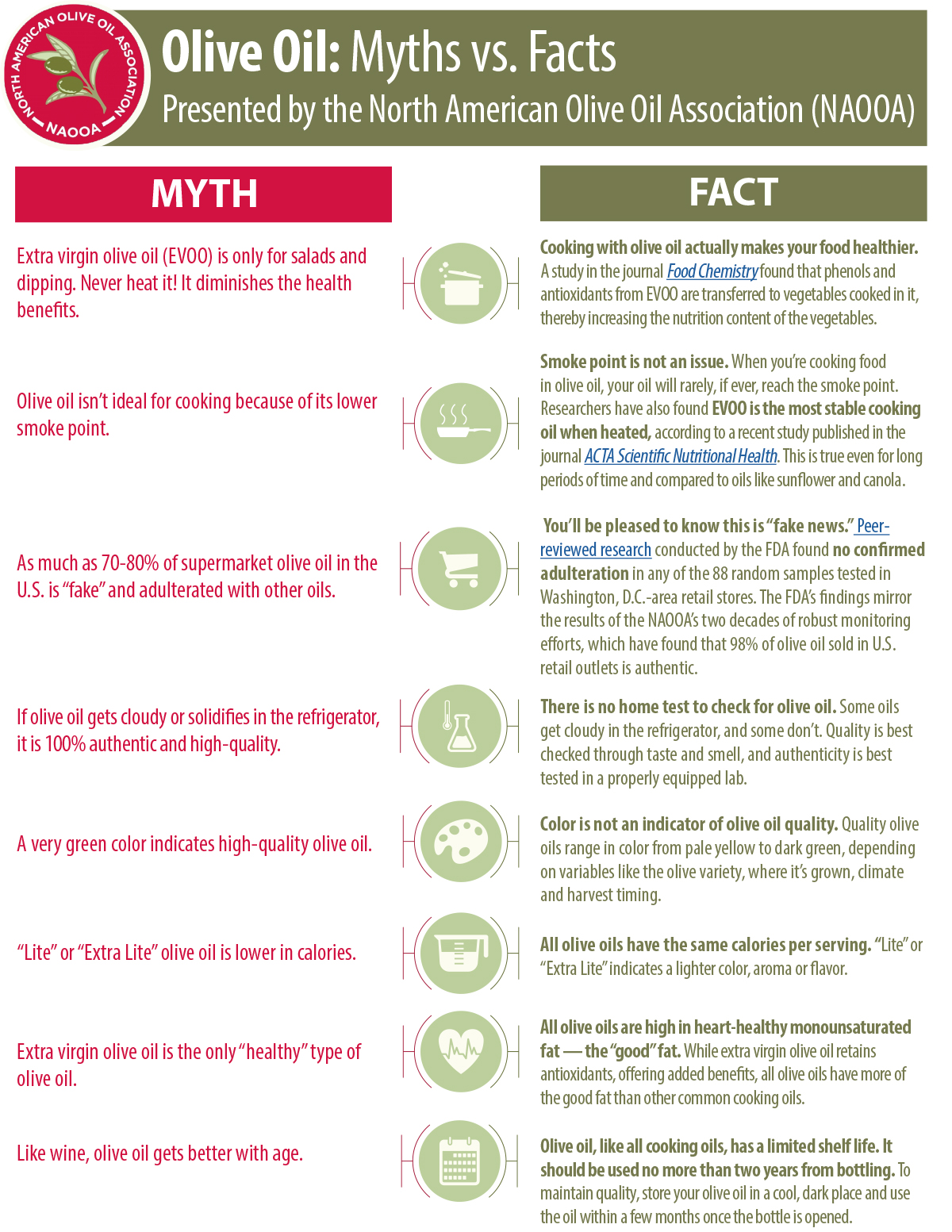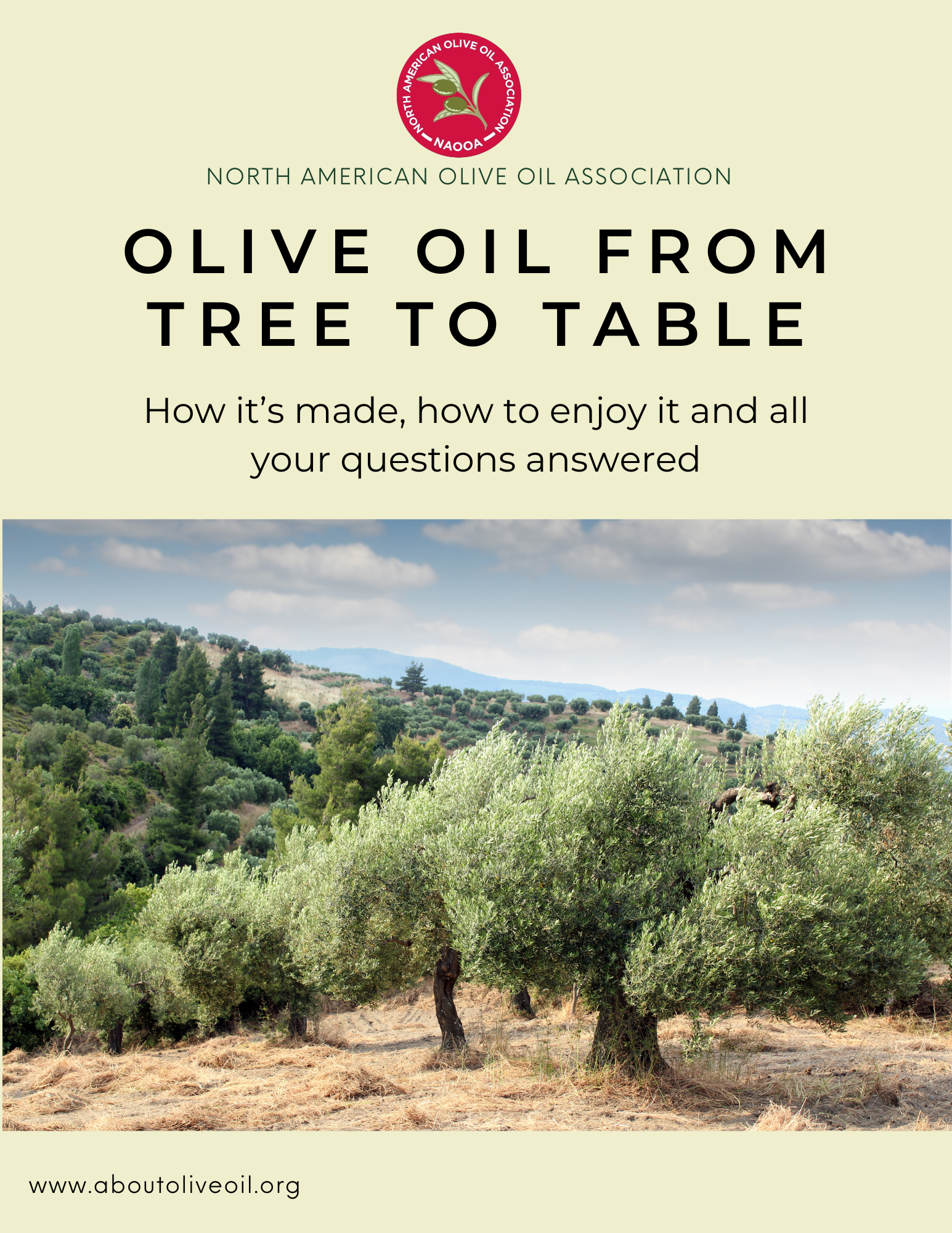
By Joseph R. Profaci, Executive Director of the North American Olive Oil Association
The olive oil market is poised for continued strong growth in the U.S. olive oil sector due in part to the valuable lessons learned during the pandemic.
Olive oil sales soared in 2020. The category grew over 25% overall, and we saw the largest increase in household penetration in a decade (up to 43%). Olive oil’s high price relative to competitive cooking oils has always been the single most important obstacle to growing olive oil consumption in the U.S., yet in 2020 many consumers overcame their price sensitivity.
The reason for this was a shift in many consumers’ perception of the value-to-price ratio. Health is the primary reason U.S. consumers switch to olive oil. Olive oil’s popularity began to grow in the U.S. with the first reports about the Mediterranean diet that circulated in the 1980’s. Since then, it seems olive oil has become the favored child of nutrition research, with a steady stream of reporting in all forms of media. As The New York Times reported in 2016, Americans recognize olive oil as one of the top foods when it comes to healthy eating.
So when due to the pandemic Americans were forced to take agency for their own health, they placed a greater value on products they knew to be healthy--like olive oil. Although prices remained constant, consumers bought less of less healthy oils and bought more olive oil. Much more.
To grow consumption further, the U.S. industry needs further shift the value-to-price ratio in olive oil’s favor. We can start with more health information. We know from consumer research that U.S. consumers’ awareness of olive oil’s health benefits is limited primarily to cardiovascular disease. By educating consumers about the potential benefits for other chronic diseases like diabetes, Alzheimer’s, and cancer, we can further increase the value of olive oil relative to other cooking oils (our recent consumer research confirms this). Explaining the unique micronutrients in olive oils—polyphenols, squalene—is another story that olive oil can own relative to other oils.
In addition to health, however, there are other key factors that influence American consumers’ perception of a food’s value: culinary enjoyment; convenience; and social responsibility. The good news is that olive oil ticks the boxes for all these as well.
When it comes to enjoyment, the richness and flavor diversity of extra virgin olive oil is similar to what motivates wine enthusiasts. What other cooking oil provides the consumer with a chance to discover and savor different varietals and oils from the far reaches of the world, with a history that goes back millennia? Only with olive oil do you get visits to olive orchards and mills, participate in tasting classes and parties, learn about food pairings at restaurants, and experience the joy from giving or getting a great bottle as a gift. Olive oil is fun.
But consumers can also learn to value olive oil for its convenience factors. Cooking oil is a zero-sum category: unless a consumer is a foodie, they will only buy as much cooking oil as they need. With its wide range of types, olive oil can meet all of consumers’ needs and become the go-to oil for their pantries. This means demonstrating olive oil’s versatility in the kitchen (and disabusing consumers of the myth so prevalent in the U.S. that you cannot cook with it).
A cooking oil that enhances and adds flavors to your food, reducing the need for salt? Extra virgin is the answer. If you prefer the flavor of neutral-tasting oils, olive oil has you covered. It is also important to teach consumers that extra virgin serves as both a cooking oil and a condiment or sauce: convenience and simplicity in a single bottle.
Finally, with education, consumers will learn to prize olive oil as the socially responsible choice. When it comes to sustainability, again, olive oil arguably has no peer among cooking oils. Only olive oil is produced from the world’s largest carbon sink permanent crop.
Moreover, olive oil needs to be understood as a clean product, mechanically produced without the use of chemical solvents. While extra virgin is the most natural, even the refined family of olive oil products are much less processed than competitive solvent-extracted cooking oils. (The fact that refined olive oil has far fewer trans fats than the competition, due to gentler heat treatment, can be another important health message.)
Once they are made aware of the health, enjoyment, convenience, and social responsibility characteristics of olive oil, American consumers’ perceptions of olive oil’s value will increase and lead to further sales growth. Reaching consumers with messaging on these topics will be costly, however, and the industry must unite to do it. For that reason, in 2022 the NAOOA intends to petition the U.S. government to create a National Olive Oil Board, similar to the Interprofesional organizations in Spain and other countries.
Given that only 43% of U.S. household purchased olive oil in 2020, the upside potential for consumption growth is enormous. Funding from a National Olive Oil Board would facilitate consumer education and enable the industry to improve olive oil’s value-to-price ratio, which was so effective during the pandemic. By increasing the perceived value for olive oil in this way, there is no doubt the industry will achieve its potential.
This article by Joseph R. Profaci, Executive Director of the North American Olive Oil Association, was originally published in Spanish translation on January 19, 2022 in Mercacei. You can visit their site to read it in other languages including Spanish, French and Arabic.





